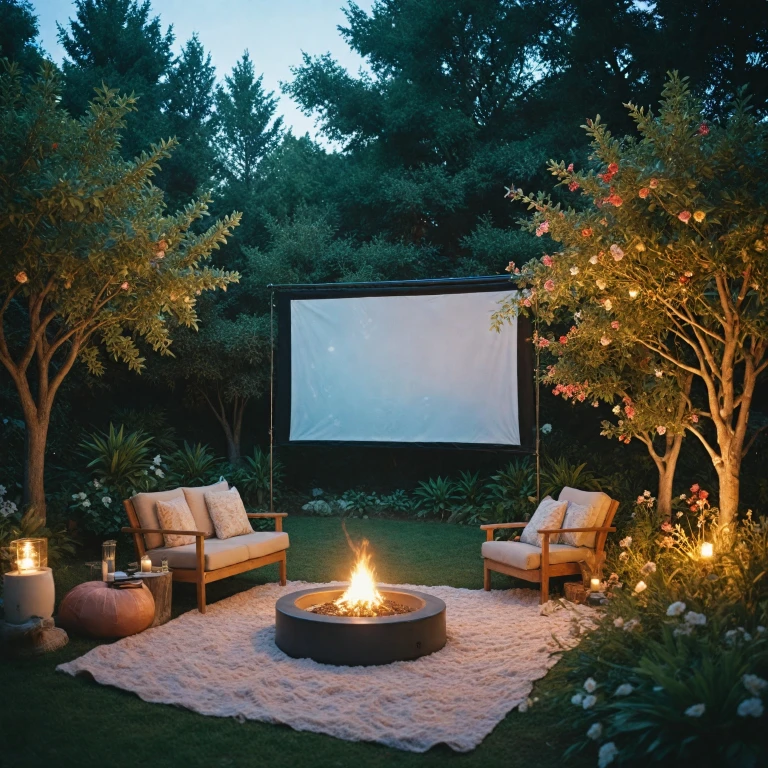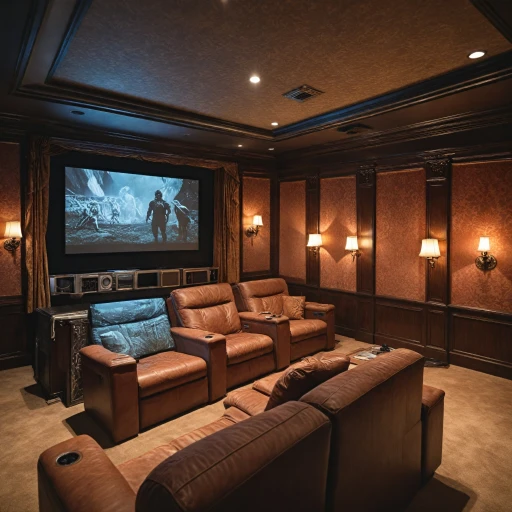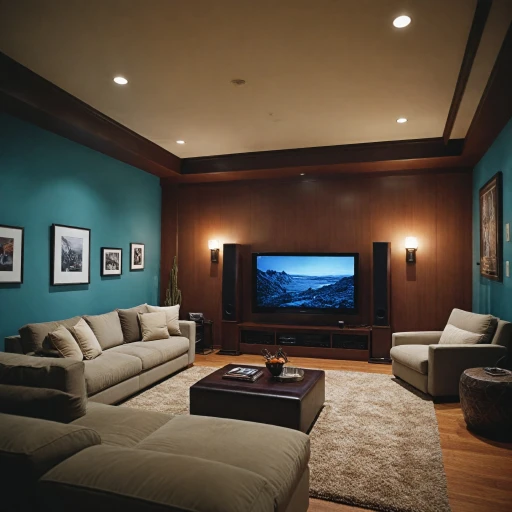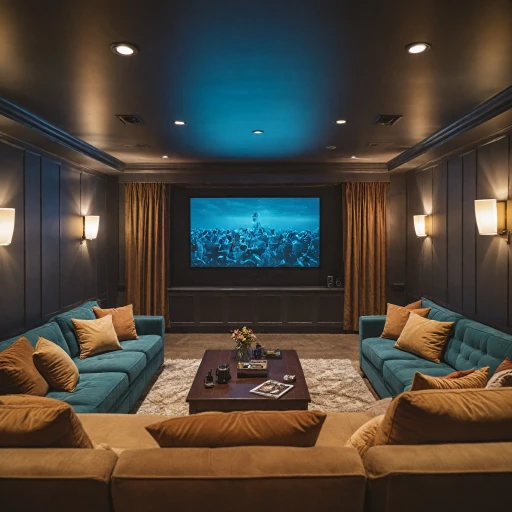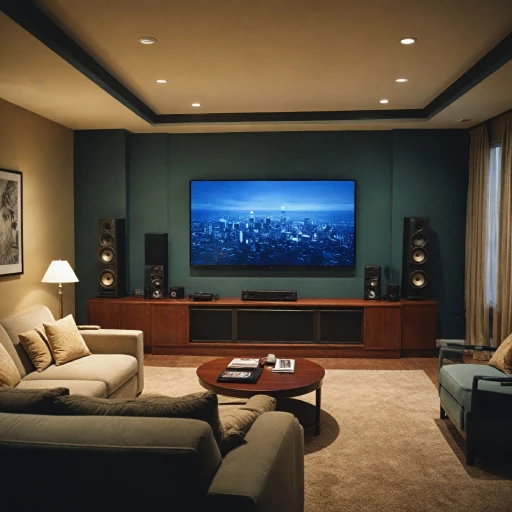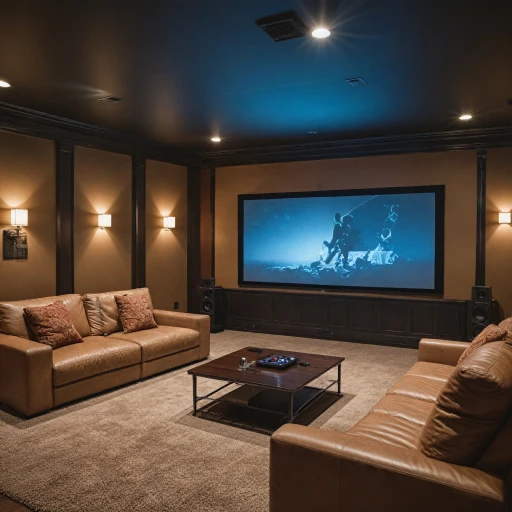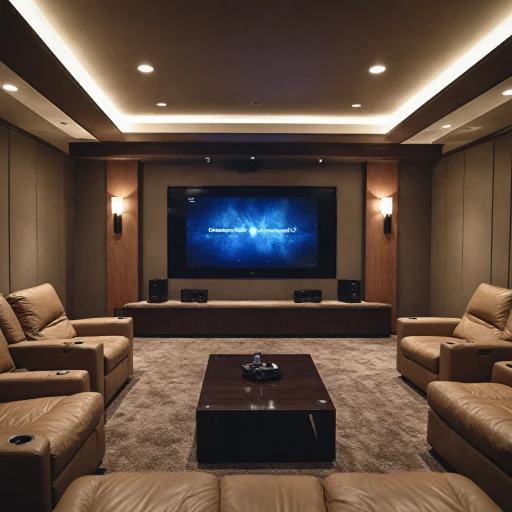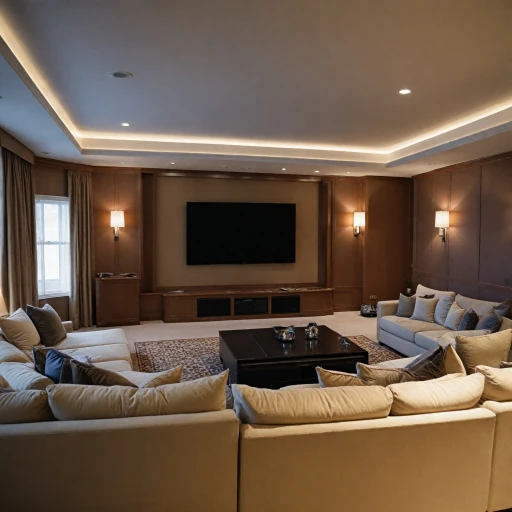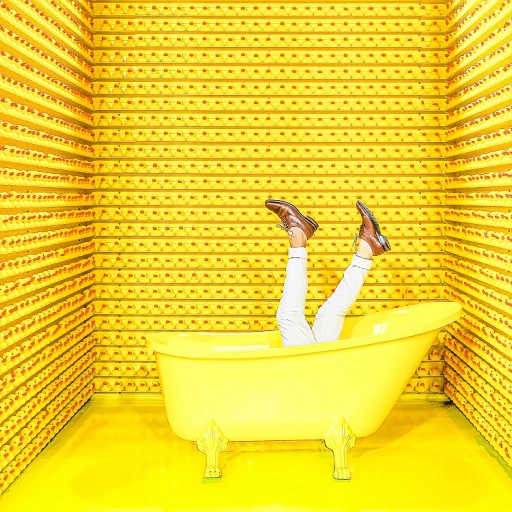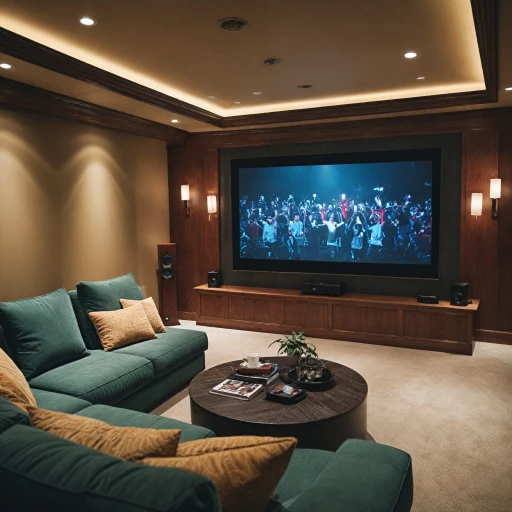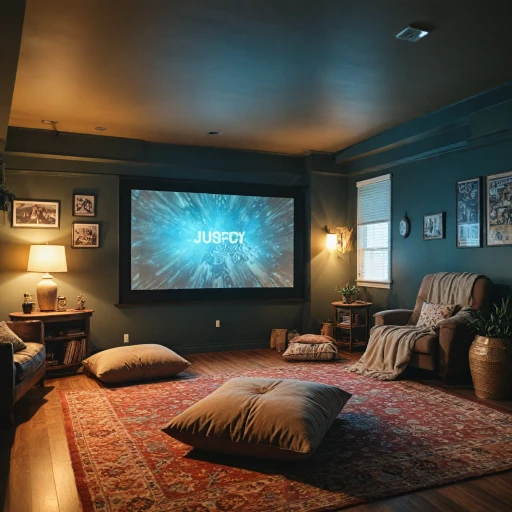
Understanding Portable Projection Screens
Dive into the World of Portable Screens
Portable projection screens have transformed the way we consume media, offering the ultimate combination of flexibility and convenience. These screens are designed to be easily transported and set up, making them perfect for both indoor and outdoor environments. Whether you're hosting a movie night in your theater backyard or setting up a presentation at a remote location, portable screens provide a versatile solution without compromising on quality.
The main draw of a portable projector screen is its ability to adapt to various spaces and viewing needs. Unlike fixed frame screens that are usually mounted permanently, portable screens can be folded, adjusted, and moved as required. This flexibility is particularly beneficial for those who may need a front projection setup one day and a rear projection setup the next.
When choosing a portable screen, key factors include the screen material, size, and support features such as legs or the type of frame. Options range from simple tripod mounts to more sophisticated models like the elite screens yard master series, which is great for outdoor projector use. Sizes vary widely, from 80-inch to 150-inch, catering to different projection requirements and available space.
Next, delve into the specific benefits of using these screens and get insights on setting them up correctly in your space to maximize your viewing experience.
Benefits of Using a Portable Projection Screen
The Benefits of Using a Portable Projection Screen
Imagine transforming any space into a cinema—whether you envision a screening under the stars in your backyard or an intimate indoor movie night. Portable projection screens offer a versatile solution that enhances the viewing experience significantly.- Versatility and Convenience: With the flexibility of screens ranging from compact table mounts to larger fixed frame or fast fold designs, you can tailor your setup to suit both your budget and space. Lightweight designs and collapsible frames make transportation from your home to an outdoor theater in the backyard seamless.
- Quality Viewing Experience: Many portable screens, like the elite screens series, offer superior screen material. Options such as white or black projection surfaces are available to maximize contrast and image quality depending on ambient lighting conditions. For a deeper understanding of black projector screens, check out this comprehensive guide.
- Affordable Price Points: Whether you’re opting for an elite portable projector screen or a budget-friendly alternative, there are products that fit a variety of price ranges. Remember, the price usd does not necessarily dictate quality—screens yard, inch for inch, offer high value relative to their cost.
- Enhanced Portability: Options like front, rear, or dual-view projection ensure that your setup can adapt to multiple viewing environments. The ultimate folding and fast fold screens are particularly popular for easily shifting between indoor and outdoor use.
- Durability and Longevity: Designed with robust materials, these screens stand up well over time. They often endure frequent setups and breakdowns without compromising the projection quality, especially if paired with compatible projectors, such as short throw or standard models.
Choosing the Right Portable Projection Screen for Your Space
Find the Perfect Fit for Your Viewing Needs
Selecting the right portable projection screen can significantly elevate your viewing experience, whether you're hosting a theater evening in your backyard or presenting at a professional meeting. To guide you through this selection, consider the following aspects:- Screen Size and Aspect Ratio: Consider the dimensions of the space where you'll set up your portable projector. If you're planning to use the screen outdoors, such as a 120-inch screen, it can provide an immersive experience fitting for large gatherings. For smaller spaces, you might opt for a 60-inch screen. Also, pay attention to the aspect ratio of the screen and ensure it matches the output of your projector for optimal clarity.
- Portability and Ease of Setup: The convenience of a lightweight and easy-to-assemble screen is paramount if frequent setup and teardown are anticipated. Options like the fast fold and ultimate folding screens ensure a swift assembly process, often making use of frames with collapsible legs.
- Screen Material: The material of the screen affects both image brightness and color accuracy. Opt for high-quality materials—such as those used in elite screens or a white matte finish—as they are excellent for diffusing light, making them perfect for both front and rear projection setups.
- Type of Projection: Determine if you'll be using a front or rear projector screen. This decision often influences the kind of mounting or leg support you'll require. Some people prefer a front projection setup in tighter spaces, while others choose rear projection for less obstruction.
- Price and Brand: Keep in mind your budget when selecting a screen. Leading brands like Elite Screens offer various series, including the Yard Master and the Elite Series, which vary in price USD and features—from fixed frame options to portable projector-friendly models.
Setting Up Your Portable Projection Screen
Optimizing Setup for Your Portable Projection Screen
When it comes to setting up your portable projection screen, a few key steps can help you achieve the optimal viewing experience, whether indoors or in your outdoor cinema. Here's a step-by-step guide:- Find the Perfect Location: Choose a spot with enough room to fully extend the screen's frame and legs. Ensure there's minimal light interference for a clear front projection. A shaded area is ideal for outdoor setups.
- Sturdy Frame Assembly: Most screens come with a fast fold mechanism or elite series frames that are easy to assemble. Make sure the frame is securely locked into place to prevent it from collapsing during use.
- Secure the Mount: In areas prone to wind, consider anchoring the stand or using a frame mount for extra stability. This is especially important with screens yard setups.
- Align the Projector: Position your projector so that it aligns perfectly with the screen. Ensure the projector is on a stable surface and matches the screen's aspect ratio. Short throw projectors are great for tight spaces.
- Adjust Screen Material: For the best picture quality, ensure the white screen material is free of wrinkles. A smooth surface helps fill the cinema with crisp visuals.
- Test the Setup: Before settling in, conduct a trial run. Test the projector to make sure the image covers the entire screen with no distortions. Adjust the projector's height and angle if needed.
Maintenance Tips for Long-lasting Performance
Ensuring Longevity with Proper Care
To maintain the quality and longevity of your portable projection screen, a little regular upkeep can make all the difference. Here are some practical tips to help keep your screen looking pristine whether you're using it for a theater backyard experience with an outdoor projector or a cinema setup indoors.- Regular Cleaning: Dust and debris can accumulate on the screen surface, which could affect image quality. Use a soft, damp cloth to wipe the white screen, ensuring the material is suitable for cleaning with water. Avoid using harsh chemicals as they can damage the screen material. A gentle cleaning routine can extend the screen's lifespan and keep your viewing experience at its peak.
- Safe Storage: When not in use, it’s vital to store your portable projector screen properly to avoid wrinkles or other damage. Utilize the frame or mount provided by brands like Elite Screens for safe keeping. If it’s a fast fold or folding screen, make sure it’s completely dry to prevent mold before storing it in its carrying case.
- Handling with Care: Whenever setting up or taking down the projection screen, handle all parts with care. Avoid tearing the screen material or damaging the frame or legs. This can be particularly important for ultimate folding screens or those used in outdoor setups.
- Regular Inspections: Conduct routine checks on the screen and frame, especially if it's an item used frequently in various environments. Ensuring there are no tears or damages can prevent issues during future projections.
Troubleshooting Common Issues with Portable Projection Screens
Resolving Common Projection Screen Challenges
When using portable projector screens, encountering a few issues is not uncommon. Here are some practical solutions to help you address these challenges and maintain an optimal viewing experience.
Wrinkles and Creases
Wrinkles in the screen material can distort the image quality. To smooth out these imperfections, consider using a steam iron on a low setting. Ensure the screen is completely dry before setting it up again. For fixed frame screens, gently pulling the material taut across the frame can also help.
Screen Stability Issues
If your portable screen's frame or legs are unstable, it might affect your viewing experience. Make sure all the components are securely fastened. For outdoor projector setups, consider using weights or stakes to anchor the legs firmly to the ground, especially in windy conditions.
Image Distortion
Image distortion often arises from improper projector alignment. Ensure your projector is correctly mounted and aligned with the center of the screen. Adjust the keystone settings on your projector to correct any trapezoidal distortion.
Screen Material Discoloration
Over time, your screen material may become discolored, affecting image quality. Regular cleaning with a soft cloth and mild soap can help maintain the white screen's brightness. Avoid harsh chemicals that might damage the screen material.
Projection Screen Tears
Tears or holes in the screen can be problematic. For minor tears, a patch kit specifically designed for screen material can be an effective solution. In cases of significant damage, it might be more cost-effective to replace the screen, considering the price USD of new portable projector screens.
By understanding these common issues and their solutions, you can ensure your portable projection screen continues to deliver a cinema-quality experience in your theater backyard or any other setting.
